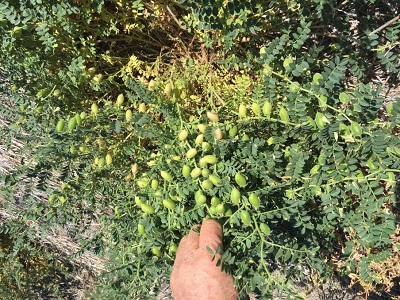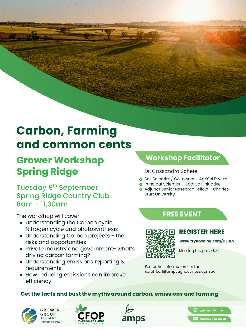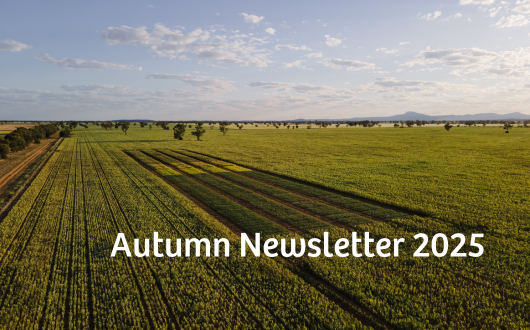November 02, 2017
Article by: Stephanie Van Eyk
Low yield expectations in this year’s chickpea crop due to some extreme growing conditions around Moree are being confirmed and driven lower with roughly a quarter of the crop in the bin so far this harvest.
AMPS Moree agronomist Tony Lockrey who consults to growers from Edgeroi to Boomi said that while pod set indicated 1-1.25t/ha yield, the effect of big temperature swings in August and September had caused a high incidence of ghost pods or “pops” containing no grain.
“So far during harvest yields are not as good as expected,” he said.
“There would be a few days of minus two or three frosts then a day at 35 degrees Celsius in August and September, so the chickpeas spent very little time in their sweet spot of 15 to 25 degrees.”

Mr Lockrey said some of the more elevated crops suffered less frost damage.
“It has been a particularly tough season all round with dry, frost, heat and late rain combined with mice, hail and the odd fire,” he said.
“Yields so far realised are in the order of 0.3 to 1.25t/ha with an average closer to 0.8t/ha.
“Farmers are again frustrated trying to capitalise on a third consecutive high price year. Long term average yields for chickpeas are in the order of 1.75t/ha.”
After a very dry winter most of the district received 100 to 125mm (4 to 5 inches) in October which helped change the outlook for summer cropping but has not added a lot to winter crops that were almost finished.
Some foliar diseases, mainly Ascochyta, have flared with rain events in chickpeas and served as a stern reminder why advisors cautioned against growing chickpeas on or near last year’s chickpea stubble.
“Chickpea on chickpea is just a terrible idea,” he said. “Everyone is warned against it.”
Mr Lockrey said everyone involved in farming was subject to the vagaries of weather in the big open-air casino.
But there were strategies that help to try and minimise the risk of exposure and gain the most efficient and profitable results possible for the season.
“Growing chickpeas on chickpeas is not one of these strategies,” he said.
Growers have pushed their rotations very hard and loaded them with peas over the last three years due to better prices and the cracks are starting to show with increased disease pressure and a likely increase in nematode numbers that will impact farmer’s rotation choices for a while.
“Grass weed pressure and resistance levels are also increasing with limited choices of grass herbicides in our minimum tillage system,” Mr Lockrey said.
For some of the later-sown chickpea crops, particularly double crops behind cotton, the late rain has promoted new growth, which is now attracting heliothis and will cause problems with green material at harvest.
“Some tough calls are being made this week whether to spray for grubs or dessicate the crop depending on perceived additional yield benefit from the late pods,” he said. And, weather-wise this week wasn’t looking good for the harvest – with a couple of rain fronts expected.
Grain quality is the next big hurdle chickpea growers face with extended exposure to wet weather in the past month potentially having an impact.
Many thanks to the Moree Campion Click Here to see original article.

Carbon, Farming & common cents - Workshop series
August 20, 2025
AMPS Research will be delivering a series of workshops to get the facts and bust the myths around carbon, emissions and farming. Workshops will be facilitated by Dr. Cassandra Schefe, Principal soil scientist, Cool Soils Initiative

RESEARCH
Bringing Smarter Risk Management to Our Region: AMPS & the RiskWi$e Program
May 20, 2025

AMPS Autumn 2025 Newsletter: Seasonal Insights, Trial Updates & Key Opportunities
April 16, 2025
From floods to full soil profiles, it’s a season of extremes.

